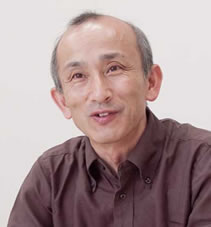Message
WNEW HORIZON IN MATERIALS SCIENCE EXPLORED ON THE BASIS OF SOLID STATE CHEMISTRY AND PHYSICS
We are exploring exotic phenomena such as superconductivity and quantum magnetism in solid state physics by searching for new materials using various techniques in solid state chemistry. Myriad of electrons in a crystal can move around almost freely to give a metallic conduction and sometimes exhibit superconductivity below a critical temperature Tc by forming quantum-mechanical pairs called Cooper pairs. New compounds with higher Tcs, hopefully above room temperature, are desired for future applications and would be achieved by finding a new strong "glue" for Cooper pairs. On the other hand, once electrons stop at each atom to be localized, the spin degree of freedom emerges. Particularly, when they are located on lattice points of the triangle geometry, magnetic frustration takes place, which tends to suppress conventional magnetic order and may lead to an exotic spin "liquid" state at absolute zero temperature. We are now looking for model compounds to study these interesting phenomena and trying to uncover the physics behind.














